We met a tour guide in Hoi An, Vietnam who was born and raised in the nearby city of Hue. We told him we were staying there for two nights. He frowned at us.
“Most people spend four hours in Hue,” he said. “Even a full day is too long.”
This seemed to be the sentiment of most of the fellow travelers we met in our hostel. The consensus was that Hue was fine, but really just a pit stop on the road to the bigger and better attractions of Da Nang and Hoi An. It might be the most underrated place I’ve ever been to.
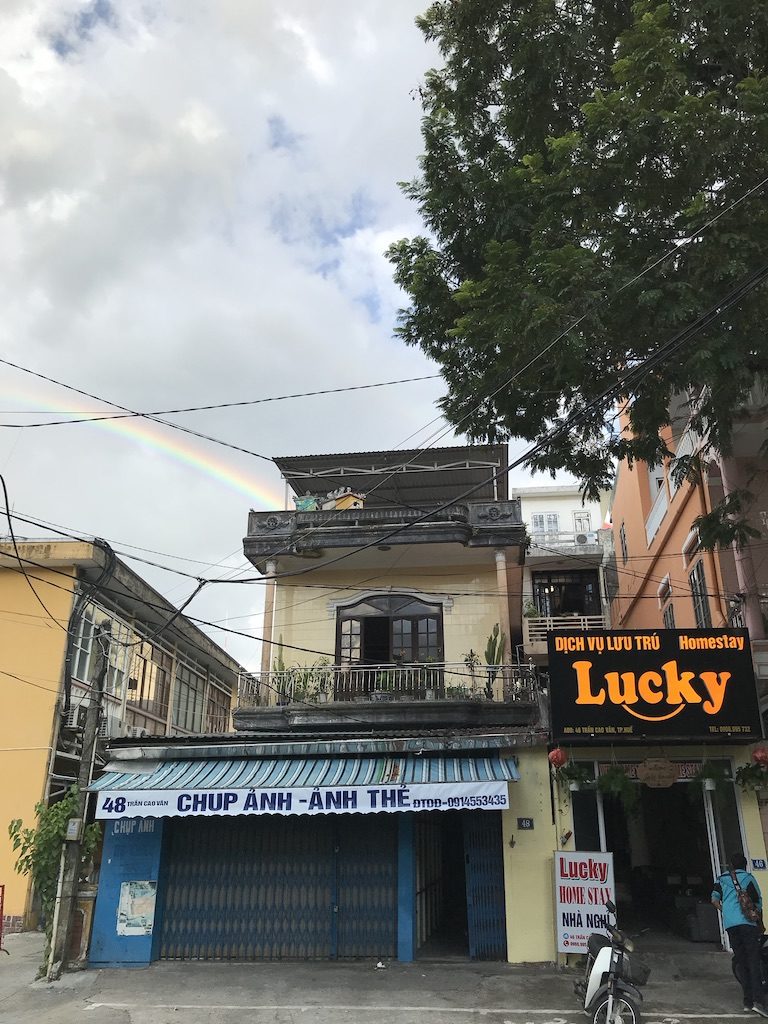
Hue was the sight of some of the fiercest fighting during the American-Vietnam War. Large concrete bunkers still stand guard in the rice fields outside the city. The effects of the war can still be felt in certain corners, and the citizens are still rebuilding to this day.
The Citadel
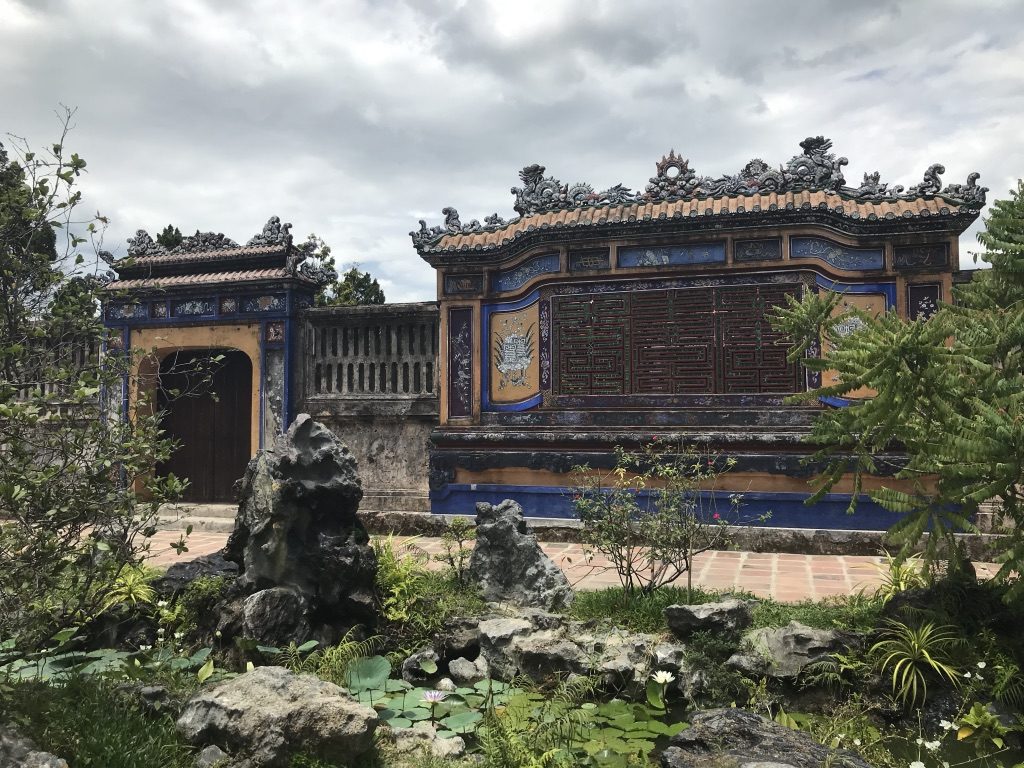
Hue’s main attraction is the Imperial City. Also called the Citadel, it was built by the Nguyen Dynasty. It’s often compared to Beijing’s Forbiden City, but really, the two are completely different beasts. We were told that we only needed two hours to fully explore it. We ended up spending the entire morning and a big chunk of the afternoon there.
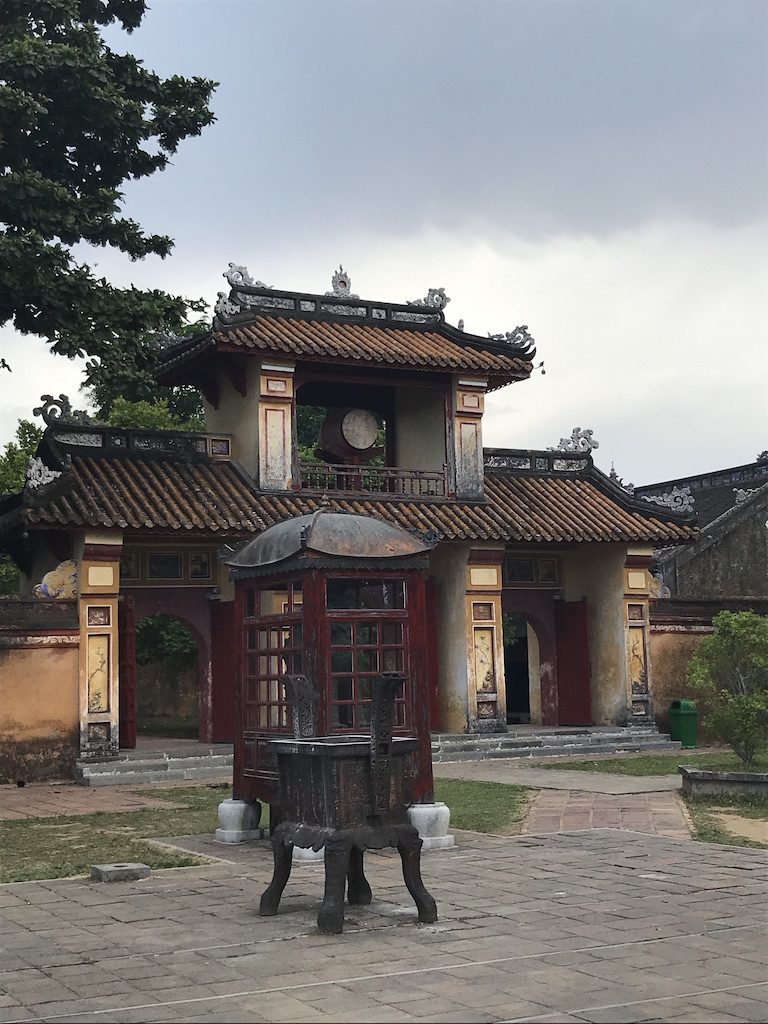
The buildings were a fascinating mix of Asian and European architecture. Chinese style feng shui gardens rested next to grounds that look plucked from a French manor. Grand Buddhist temples coexisted next to royal treasury buildings that look like European banks. Beautiful sculptures stood stoically in the courtyards. Intricate mosaics hugged the walls. The lunch options were mediocre, but the scenery was amazing.
And in between the impressively restored buildings and sculptures, there were still piles of rubble and grassy vacant areas. Massive stone gates that lead to nowhere. Crumbling walls that made the whole place feel like an ancient ruin.
Of course, it wasn’t time that destroyed the Citadel at Hue. It was American bombs.
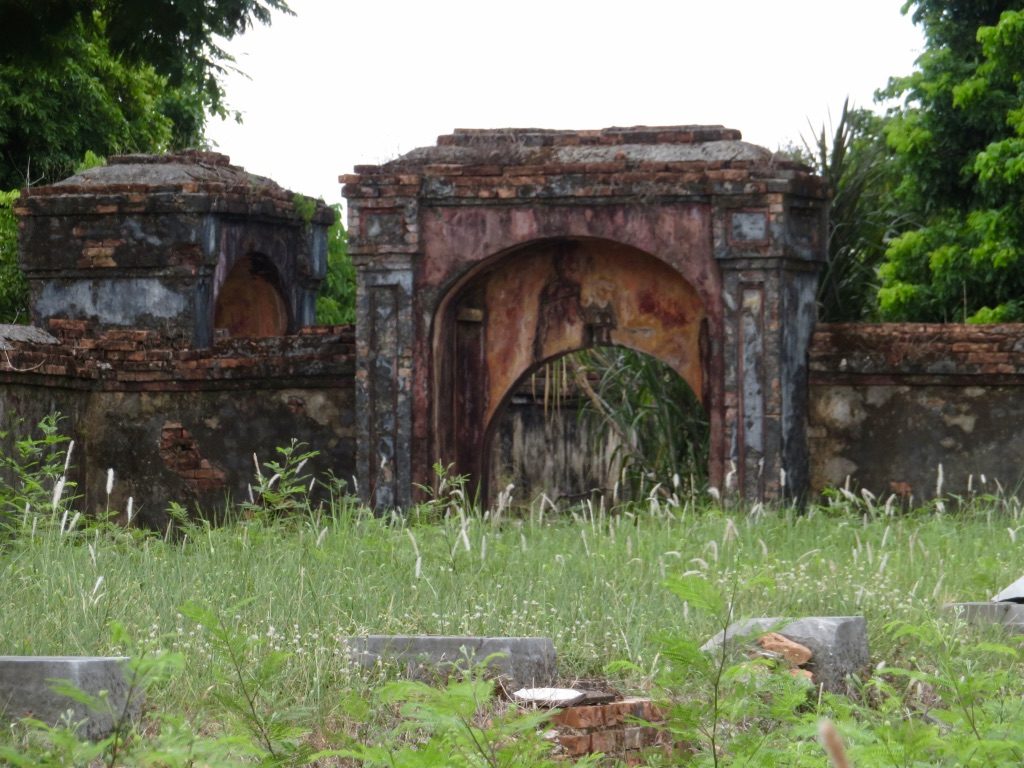
Bach Ma National Park

The next day we took an early tour to Bach Ma National Park. Bach Ma rests in the mountains an hour or so from Hue. During the colonial era, the French built numerous bungalows in the mountains here to escape the heat. The heart of the park is a stomach curdling drive along a narrow road.
We hiked through the jungle, up to the summit of one of the mountains. A watchtower sat there, providing a 360 degree view of the surrounding area. All the way to the ocean in one direction, possibly all the way into Laos in the other.

There was a small hole dug into the mountainside on the trail down from the tower. A wooden sign said that this was the entrance to a tunnel used by the Viet Cong during the war. My claustrophobia began to act up at the thought of squeezing into that tiny hole.
But I didn’t get a real appreciation for what the guerrilla fighters had to do until we took the next trail. Our guide told us we were going to go “the hard way.” But really, how hard could it be? Especially considering that a few members of our group were a little older and didn’t appear to be in the best of shape.
We trekked through muddy jungle paths, meandering along a stream that flowed pleasantly through the trees. Soon the path dipped up and down along the curve of the mountainside. We had to scramble, holding on to trees and vines to maintain footing.
Then the path dropped away, leaving nothing but a rope dangling along the side of a rock. We swung along the rope, trying not to look down at the cliff dropping to the left. There were no clear footholds, and the rope seemed loose in all the wrong places. I swung down and imagined doing this while trying to carry a gun and supplies on my back.
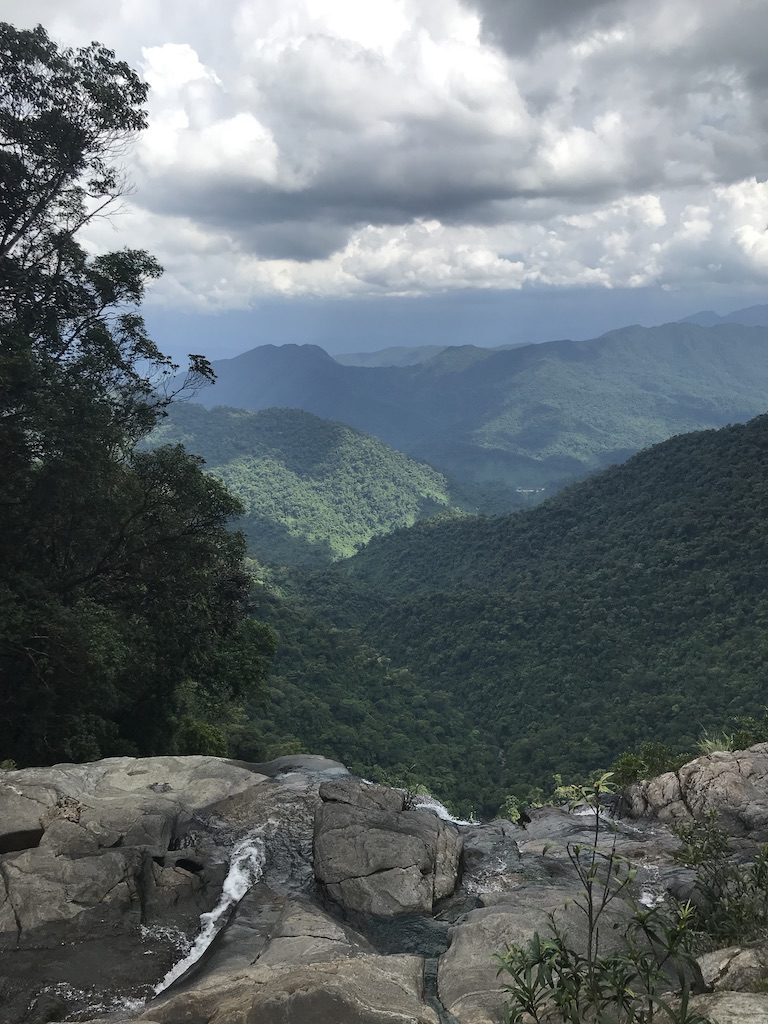
After more rope swinging and a rickety ladder, we reached our destination. The top of a waterfall. The stream we’d been following dropped down off the side of the mountain. A gorgeous view of the park spread out in front of us. It was beautiful, but there so many bees. So many bees. And the edge of a cliff is not the place to be swatting away insects.
My only real regret was doing Bach Ma with a tour. I’m not the kind of hiker who likes to just do the trail and get to the destination. I wanted to take my time. To listen to the symphony of jungle sounds that echoed out through the trees. To look at the birds flittering around the forest. To try and find out what the hell was making that noise that sounded like an animal chainsaw.
Nightlife
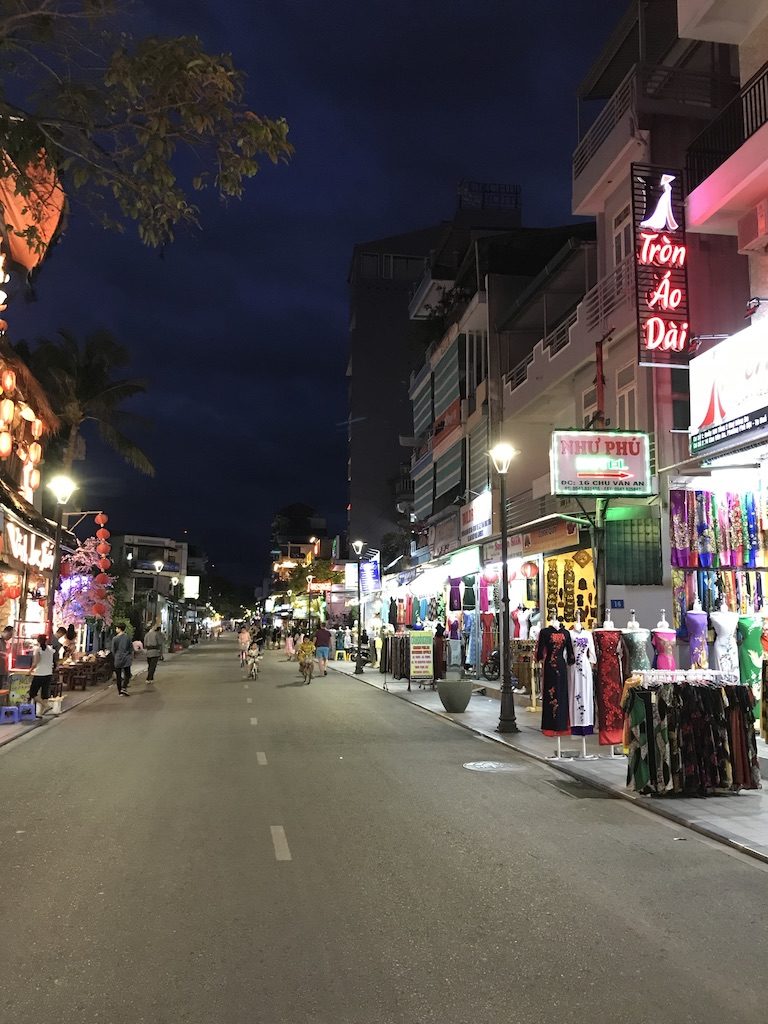
Back in Hue, we decided on a whim to succumb to the touts selling boat tours along the waterfront. It cost about 200,000 dong for us to have the entire boat to ourselves. We probably could have haggled, but eh, that’s like eight US dollars. It was worth it.
We cruised along the perfume river as the sun sank down behind the mountains. The sunsets in Vietnam were probably the best sunsets I’ve ever seen. Brilliant oranges, reds, pinks, and purples painted all across the sky. Pictures could never do it justice. We eventually stopped trying and just admired nature’s show.
After dark, we went to the tourist zone for some nightlife. Much like everything else in Hue, the nightlife was underrated. It was unlike other places, where tourists and locals are kept strictly segregated. In Hue the locals, Vietnamese tourists and foreign tourists all mingle together happily on a closed off pedestrian street.
You can go around the world and spend your evenings in the same place. Hue’s bars had much more personality. There were two military themed bars where the wait staff wore camouflage. It seemed to me to be in pretty poor taste, but I’ll admit the DMZ bar’s rooftop probably had one of the best views in the city.
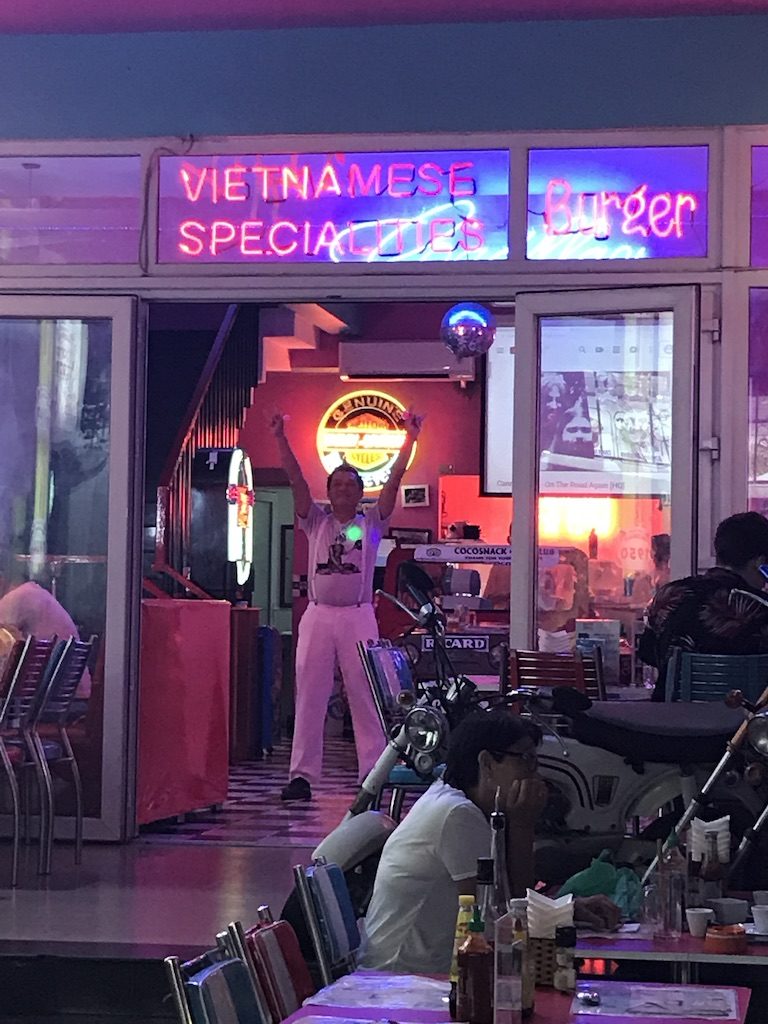
Our favorite, however, was I believe called Vietnam Cocosnack. It was a fifties themed bar, complete with vinyl booths, phony jukeboxes and pictures of James Dean hung on the walls. The bar projected YouTube videos of American rock and roll on the wall outside. Not just music from the 1950s, but classic American rock from all decades, including a healthy dose of Kiss.
The owner is what made the place really special. He wore white pants with suspenders over a white t-shirt. His hair was bleached and formed into a tall faux-hawk. He danced to the music and chatted with the patrons. He even posed when I was trying to surreptitiously take a picture as we left.
I couldn’t help feeling regret as we hopped on the bus out of Hue the next day. We didn’t even make it to see the numerous tombs and temples dotted around the city, or the war relics in the Hue museum or nearby demilitarized zone, or rent bikes to explore the other neighborhoods and the surrounding rice fields.
Forget four hours. Two and a half days wasn’t nearly enough time to fully explore all that Hue has to offer.

